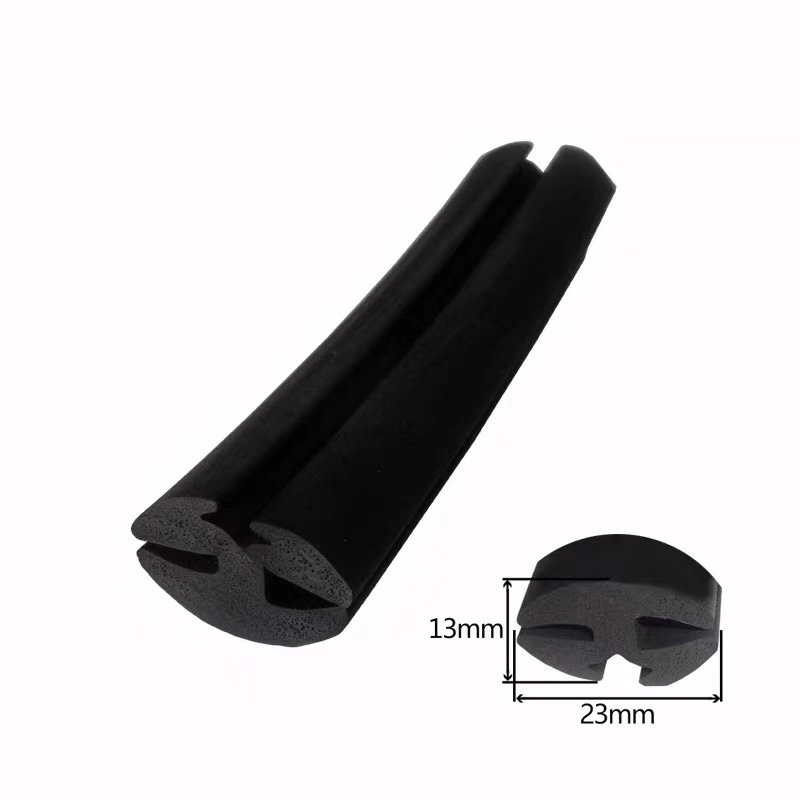dust-proofing sealing strip
The Importance of Dust-Proofing Sealing Strips in Modern Applications
In today's fast-paced industrial and commercial environments, maintaining a clean and safe workspace is paramount. One of the unsung heroes of cleanliness and safety is the dust-proofing sealing strip. These essential components are used in various applications, from residential windows and doors to complex industrial machinery. This article explores the significance of dust-proofing sealing strips, their types, installation methods, and benefits.
Understanding Dust-Proofing Sealing Strips
Dust-proofing sealing strips are designed to create a barrier that prevents dust, dirt, and other contaminants from entering a protected area. They are particularly important in settings where cleanliness is critical, such as laboratories, clean rooms, manufacturing plants, and homes. These strips come in various materials—such as rubber, silicone, foam, or vinyl—each providing unique benefits depending on the application.
Types of Dust-Proofing Sealing Strips
1. Rubber Sealing Strips Durable and resilient, rubber sealing strips are excellent for external doors and windows. They can withstand harsh weather conditions, making them ideal for outdoor applications.
2. Silicone Sealing Strips Known for their flexibility and resistance to high temperatures, silicone strips are commonly used in commercial kitchens and laboratories where heat and moisture are present.
3. Foam Sealing Strips Soft and compressible, foam strips are often used in residential applications. They fill gaps and ensure a snug fit, keeping dust and allergens at bay.
4. Vinyl Sealing Strips These are typically used for sliding doors and windows, providing an effective barrier against dust while also offering insulation benefits.
Installation Methods
Installing dust-proofing sealing strips is generally straightforward, requiring minimal tools. The following steps outline a basic installation process
1. Measure the Area Accurately measure the length and width of the opening where the sealing strip will be applied. This ensures that you cut the strip to the correct size.
2. Clean the Surface Before applying the strip, it's crucial to clean the surface where it will adhere. Remove any dirt, dust, or old adhesive that may prevent a proper seal.
dust-proofing sealing strip

3. Cut the Strip to Size Using a sharp knife or scissors, cut the sealing strip to match your measurements. Ensure the cuts are straight for a neat finish.
4. Apply the Adhesive (if required) Depending on the type of sealing strip, you may need to apply adhesive. Some strips come with an adhesive backing, while others may require extra adhesive for secure installation.
5. Align and Press Carefully align the strip with the edges of the frame and press firmly. Ensure there are no gaps, as any space left can allow dust to enter.
6. Allow to Set If adhesive was used, allow it to set according to the manufacturer's instructions for maximum effectiveness.
Benefits of Dust-Proofing Sealing Strips
1. Improved Cleanliness By preventing dust and dirt from entering enclosed spaces, dust-proofing sealing strips significantly enhance cleanliness, which is crucial in maintaining a hygienic environment.
2. Allergy Reduction For allergy sufferers, sealing strips can act as a barrier against allergens such as pollen, pet dander, and dust mites, helping to create a healthier indoor environment.
3. Energy Efficiency Alongside dust-proofing, sealing strips also help in insulating spaces, reducing energy consumption by preventing drafts, thus lowering heating and cooling costs.
4. Equipment Protection In industrial settings, dust-proofing sealing strips protect machinery and delicate equipment from dust buildup, which can lead to malfunctions or decreased efficiency.
5. Increased Comfort A dust-free environment contributes to greater overall comfort, reducing irritation from allergens and enhancing the quality of life for inhabitants.
Conclusion
In conclusion, dust-proofing sealing strips are critical components that help maintain clean, safe, and efficient spaces in various applications. Their role in reducing allergens, enhancing energy efficiency, and protecting equipment cannot be overstated. As industries continue to evolve and cleanliness standards become stricter, the demand for effective dust-proofing solutions will only increase. Investing in quality sealing strips is an investment in health, efficiency, and overall well-being.
Share
-
The Best Lubricants for Aluminum Roller GuidesNewsJul.23,2025
-
Slitting Machine Applications in the Packaging IndustryNewsJul.23,2025
-
Rolling Roller Balancing Techniques for Smooth OperationNewsJul.23,2025
-
How To Optimize An EV Battery Assembly LineNewsJul.23,2025
-
Energy Efficiency in Modern Battery Formation EquipmentNewsJul.23,2025
-
Automation Trends in Pouch Cell Assembly EquipmentNewsJul.23,2025







